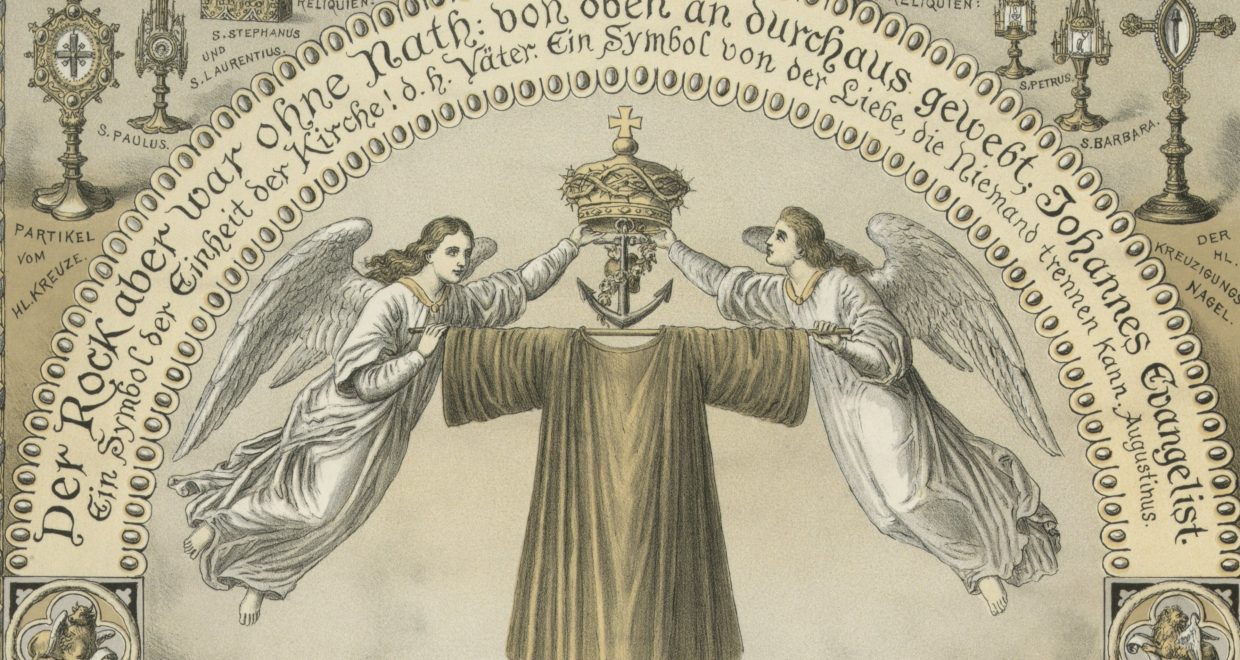The Holy Coat of Jesus: Mass Pilgrimage and the Usable Empire in a Napoleonic Borderland
Borders are not going anywhere. In Europe alone, the stark realities of our time include the aftermath of Brexit, the tendency to shore up ‘Fortress Europe’ against refugees from the Middle East and Africa, drastic border closures implemented to slow the spread of COVID, and the ongoing Russian attempt to redraw the map by waging war on Ukraine. In this situation, it seems as urgent as ever for historians and other scholars to examine what borders have done to people and what people have done to borders.
Taking pilgrimage and Catholic renewal after the French Revolution as a thematic lens, my article suggests that the Revolutionary and Napoleonic eras constitute a fertile terrain of inquiry into the history of borders and borderlands. I show that Catholic clergy and laypeople exploited both the strengths and the weaknesses of the French imperial border regime to create one of the great religious mass events of the time: the pilgrimage to the Holy Coat of Jesus in Trier. In September 1810, within less than three weeks, over 200,000 pious visitors overran this small provincial city to venerate one of the most prestigious Christian relics. More than 40% of pilgrims came unauthorized, outwitting the Napoleonic police apparatus on a massive scale. They transgressed the departmental boundaries that defined the diocese of Trier even though the local bishop had invited only his own diocesan subjects to come see the Holy Coat. He had promised his suspicious state interlocutors to ensure an orderly pilgrimage by keeping the event confined within departmental borders. It was an illusory promise – a necessary smokescreen in the making of a spectacular pilgrimage.
In other words, both elite and ordinary Catholics found subtle ways to deal with the imperial territorial framework. For pilgrims in the Rhenish borderlands and neighbouring regions, Napoleonic France was not a glorious empire worth collaborating with. After all, the police ministry in Paris and most lower-level bureaucrats displayed an unmistakable hostility toward the ‘superstitious’ and ‘disorderly’ practices associated with pilgrimage. But neither did pilgrims simply abhor and resist the imperial state. Instead, from their perspective in 1810, the French Empire and its borders were usable.
Napoleon has always polarized scholarly and public opinion, so we may easily be led to think that the people who lived in his time must have either hated or loved him as well. Indeed, he had countless admirers, while countless others resented the violence his policies and his armies unleashed in Europe and beyond, especially in the Caribbean. In the Rhineland and other relatively tranquil parts of the French Empire, however, a large grey area existed between collaboration and resistance. There, the border regime was malleable. Through the great pilgrimage of 1810, Catholics exploited that malleability to reassert their faith in spectacular fashion.
Image credits: Detail of a card remembering the 1844 and 1891 exhibitions of the Holy Coat of Jesus in Trier. Image in the public domain. Source: Wikimedia Commons, https://commons.wikimedia.org/w/index.php?curid=3002387 (accessed on March 13, 2023).
Mass Pilgrimage and the Usable Empire in a Napoleonic Borderland by Kilian Harrer






